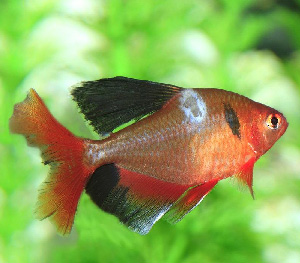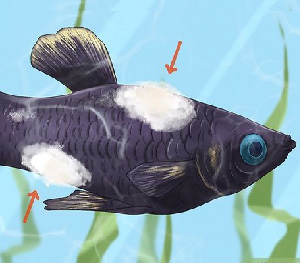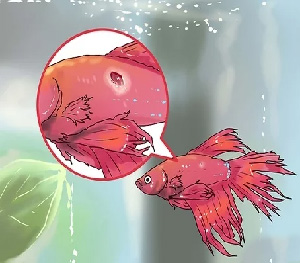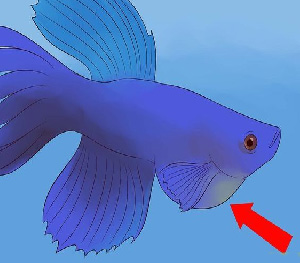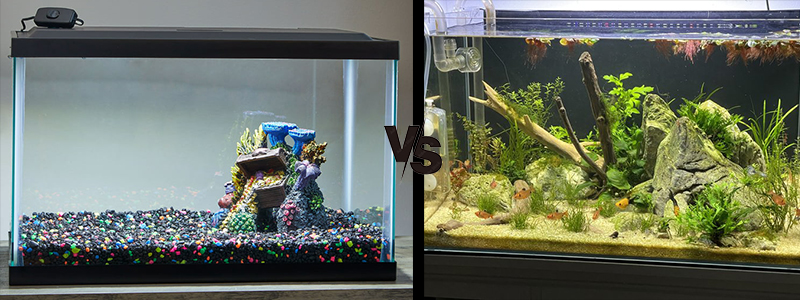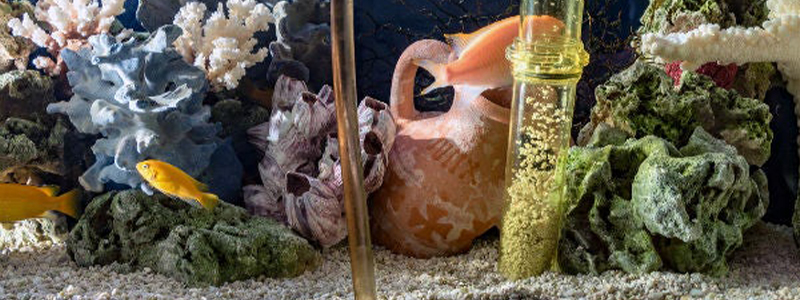Does your fish is showing signs of cotton-like fluffy growth that is white or gray on their mouth or body? If so, then unfortunately, it may indicate a fungal infection on fish.
These aquarium fish fungus infections are commonly caused by poor quality of water or stress in fish, which can lead to other diseases. Therefore, to tackle this problem, always start the treatment process by begin by thoroughly cleaning the aquarium and creating a friendly environment for the fish.
The prevention or getting rid of fungus involves identifying the signs and symptoms along with the main cause of the infection. As a result, this blog will provide several fish tank fungus treatment choices and preventive measures to ensure the long-term health of your tiny aquatic creatures.
Disclosure: This article contains affiliate links. When you follow a link to purchase the products, I sometime earn a commission, at no additional cost to you. Read my full disclosure here.
What is Aquarium Fish Fungus?
Aquarium fish fungus commonly known as fungal infection on fish is a prevalent disease that affects freshwater fish in aquariums.
It is caused by different types of fungal spores such as Saprolegnia, Achlya, and Fusarium. If left untreated, it can result in additional infections like septicemia, fin rot, or dropsy. To ensure the well-being of fish, it is important to quickly identify and start treating fish fungus.
What Causes Fungal Infection on Fish?
Fish body fungus or fungus on fish eye is caused by fungal spores that primarily affect weak and stressed fish, though they may transfer to healthy fish in low-quality water. The disease – fungal infection on fish, frequently develops in aquariums with unfavorable environments, which gives rise to numerous potential sources of infection.
The most likely causes of fungal infections on fish are;
- Water quality issues: When there is an excess of organic matter, insufficient oxygenation, and elevated levels of ammonia in fish tanks, it weakens the fish and increases their vulnerability to aquarium fish fungus.
- Lack of proper aeration: Insufficient airflow within the tank leads to low oxygen levels and the accumulation of detrimental gases such as ammonia. This initiates stress among fish making them highly susceptible to fungal infection on fish.
- Low water temperature: When the water temperature is low, it can harm fish health. This is because cold waters slow down their body systems, hence slowing down their immune responses and making them more vulnerable to aquarium fish fungus.
- Overcrowded Tank: If your aquarium is overcrowded with too many fish, it can create problems for the entire tank ecosystem. Since, there is more number of fishes in tank; they will consume more and more oxygen, creating shortage of oxygen supply after some time. In such conditions, stress can occur which will once again lead to can lead to aggressive behaviors that may result in injury or added stress for rest of the fishes in tank.
As a consequence, this lowers the overall immunity of the tank and makes all the fish more prone to developing fungal infection on fish. Thus, for treating fish fungus, you must keep fewer fish in a tank.
Identifying Aquarium Fish Fungus (Signs and Symptoms)
- White or Grey Spots: Skin lesions that appear white or gray are evident, primarily around the fins and gills, indicating the presence of aquarium fish fungus causing significant damage to the skin and tissues.
- Furry Growth: A fuzzy growth can be observed along the fish’s gills which are caused by fungal development leading to breathing difficulties and potentially suffocation if not treated promptly.
- Clamped Fins: Treating fish fungus is simpler when you can spot one of the major symptoms- clamped fins. In this, fish actually bring their fins closer to their body and make them stiff to protect themselves from fungal spores. This indicates a fungal infection on fish.
- Skin Darkening: Color changes can be caused by poor water quality, but if the darkening persists, it may suggest that a fungal infection is spreading to other tank inhabitants.
- Lumps/Swellings: Pay close attention to any lumps or swellings on the fish’s body; bleeding lumps may indicate a bacterial infection, whereas non-bleeding ones could be a result of fungal spores leading to fungal infection on fish as well as organ failure.
If your fish shows any of these symptoms of aquarium fish fungus, it’s important to seek help from a fish expert at your local pet store.
Treating Fish Fungus
1. Maracyn
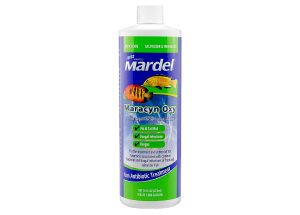
Quick view on Amazon
Available in: Australia, Canada, UK and US
Treating fish fungus with Maracyn is always an easy task! Address signs of fungal infection on fish or bacterial infections in your fish’s mouth, by adding Maracyn to the tank. This antibiotic is known for its effectiveness against columnaris, a common bacterial infection that causes symptoms like grayish-white patches around the mouth.
Directions
- Purigen resin or activated carbon should be removed from the aquarium along with other chemical filtration.
- Use one packet of Maracyn for every 10 gallons of water, as recommended by the manufacturer for treating fish fungus.
- For five days, repeat the procedure every 24 hours.
- Make sure the entire 5-day course of fish tank fungus treatment is followed, even if symptoms get better for aquarium fish fungus.
2. Ich-X
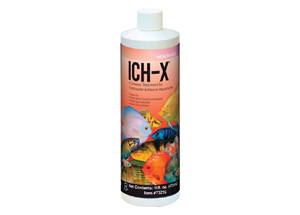
Quick view on Amazon
Available in: Australia, Canada, UK and US
If the fish has fungal infections in other areas of its body, you can use fish tank fungus treatment by combining Maracyn and Ich-X. The ingredients found in Ich-X, which include formaldehyde, methanol, and malachite green chloride, are known to effectively combat fungi.
Directions:
- The firsts step for treating fish fungus is to remove the chemical filters and clean the aquarium.
- Use 1 packet of Maracyn and a tablespoon of Ich-X per 10 gallons for minor infections, soak for a full week, and check to see if symptoms go away.
- Use a single package of Maracyn and a tablespoon of Ich-X per 10 gallons for severe infections or persistent symptoms, repeating every 24 hours for 5 days.
3. Salt
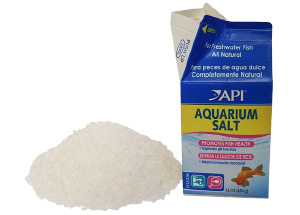
Quick view on Amazon
Available in: Australia, Canada, UK and US
Salt is a useful remedy for fish tank fungus treatment, treating fungal infections on fish, both externally on the body and inside the mouth.
However, it should only be used in tanks that do not contain live plants or in a separate quarantine tank with artificial decorations. It is important to use aquarium salt or rock salt specifically meant for this purpose, rather than table salt, marine salt, or Epsom salt.
Most types of fish such as tetras, barbs, danios, African cichlids, livebearers, betta fish, goldfish shrimp and plecoscan tolerate the presence of salt without any adverse effects, thus, making salt suitable for fish tank fungus treatment.
On the other hand, it’s important to note that certain sensitive species like anchor catfish should never come into contact with it when treating fungal infection on fish.
Instructions:
- Use a separate aquarium with fake decorations or no live plants.
- Instead of ordinary salt, marine salt, or Epsom salt, pick aquarium salt or rock salt.
- A tablespoon of salt per three gallons of water is a good place to start.
- Watch the fish’s reaction for a week to this fish tank fungus treatment. Remove the salt gradually by performing weekly thirty percent water changes if you are healed.
- If the aquarium fish fungus still exists, you may need to raise the salt concentration.
Preventing Aquarium Fish Fungus
Isolate New Fish before Adding them to Tank
Before adding new fish to your aquarium, isolate them in a separate tank for at least 2 weeks. This will act acts as a precautionary measure against the introduction and spread of aquarium fish fungus.
By quarantining the newly acquired fish, you can ensure that they are completely free from any fungal infection on fish or potentially harmful bacteria before introducing them into the main aquarium.
Change Water on Daily-Basis
Regularly changing the water in your aquarium is important for maintaining a healthy environment for your fish.
It can aid in removal of ammonia, nitrites, and nitrates which can harm fishes.To keep the tank environment at its best by avoiding aquarium fish fungus, it is recommended to perform a partial water change of at least 25% weekly.
Healthy Diet for Fish
In order to prevent fungal infections on fish and make them stronger, provide them with a healthy diet. This can include high-quality pellets or flakes specially formulated for carnivores or omnivores, along with raw food options like brine shrimp.
Avoid Overcrowding
Overcrowding is never a good option! It often leads to unnecessary stress, thus, it’s better to follow safe fish stocking guidelines. Introduce one inch of fish per gallon of water to create a balanced environment where your fish can thrive and survive fungal infection on fish.
Conclusion
Overall, we must keep in mind that fungal spores can potentially be present in our tanks at all times. Hence, there is always a risk of aquarium fish fungus!
However, by taking the precautions and giving them proper care, we can prevent many diseases or infections from occurring. Our core focus should always be their health; this includes maintaining a clean environment with minimal stress factors and providing them with a well-balanced diet that can prevent fungal infection on fish.
By sticking to our guide of fish tank fungus treatment, you can create an ecosystem within your aquariums where fish can thrive while also being resistant to diseases.

